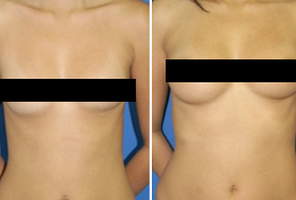What is microphlebectomy?
Microphlebectomy is a treatment option for varicose veins. Performed on an outpatient basis, microphlebectomy treats veins that are visible on and close to the surface of the skin, and is a great option if the problem veins are too large to be effectively treated with other procedures like sclerotherapy.
How is microphlebectomy performed?
Microphlebectomy stops the flow of blood into malfunctioning veins by using tiny incisions to remove problem-sections of the vein. The sections that aren’t removed then clot and seal off, resulting in blood pumping through nearby healthy veins rather than those that were causing discomfort and discoloration.
How does microphlebectomy compare to other, similar procedures?
When compared to alternatives, microphlebectomy offers some positive advantages. Microphlebectomy:
• Is minimally invasive
• Requires only local anesthesia
• May be used in combination with sclerotherapy for treatment of deeper veins
• Requires little-to-no recovery time, so patients are back to their daily activities right away
Who should consider microphlebectomy?
Individuals who desire treatment for their painful or unattractive varicose veins or spider veins may be candidates for microphlebectomy. If a patient has a vascular condition or is pregnant, this procedure may not be for them.
How is the procedure performed?
After mapping the treatment area to decide where to make the tiny incisions, the specialist will anesthetize the area locally to ensure the patient’s comfort throughout the procedure. The specialist will then make the small openings where planned, down the length of the problem vein, using a little tool to grasp the vein for removal. This process usually takes about 30 to 45 minutes to perform, or longer depending on the number of targeted veins. Afterwards, a bandage will be placed on the site.
What should I expect of my recovery?
A short recovery time is one of the benefits of microphlebectomy, especially compared to that of traditional surgical procedures. The majority of patients resume their daily activities right after treatment, though they are encouraged to refrain from physically demanding activity for a week or so. Compression stockings are often recommended for the week following the procedure to hasten and support the healing process.
Are the results immediate?
Immediate results are evident right after the treatment, and continue to improve as bruising fades. Since the incisions made are very small, most patients experience almost no scarring.
Are there any risks involved?
Side-effects are typically mild and short-lived, but could include mild discomfort and bruising immediately following the procedure. On rare occasion, some patients experience slight damage to the tiny, surficial nerves near the treatment site, but these ordinarily heal in time.
Is microphlebectomy approved for use in the U.S.?
Yes, the microphlebectomy procedure has been approved for the treatment of varicose and spider veins in the United States.
Will my insurance cover the cost of treatment?
Microphlebectomy is typically considered a cosmetic treatment, and so is not often covered by medical insurers. However, if the treatment is for veins that are compromising the patient’s health or well-being in a medial way, the procedure may be covered to an extent. It is best to discuss your personal coverage with your insurance representative.
Disclaimer: This information is intended only as an introduction to this procedure. This information should not be used to determine whether you will have the procedure performed nor does it guarantee results of your elective surgery. Further details regarding surgical standards and procedures should be discussed with your physician.
By OnlineSurgery.com Staff
Updated: August 21, 2009

